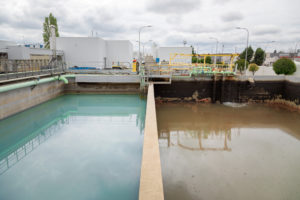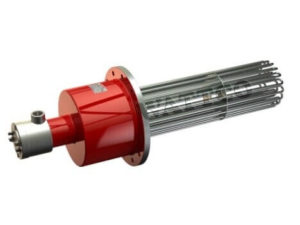Wastewater Treatment Processes and Immersion Heaters
Last updated on December 19th, 2024 at 03:06 pm
Heightened awareness surrounding environmental protection has highlighted wastewater treatment as a pressing issue. Cities and municipalities are trending towards tough requirements on the quality of effluent being discharged into water streams.
As a response, wastewater treatment processes have been improved in terms of efficiency and footprint in recent years. This article looks into a modern wastewater treatment process and how immersion heaters are playing an important role in making it more efficient and economical.
Wastewater is usually produced as a byproduct of an industrial process, commercial activity, or domestic household process. Wastewater treatment is mandatory before discharging fluid into the sewage stream. This ensures that health and safety regulations are met.
Usually, pre-treatment wastewater is laden with heavy metals and carcinogenic compounds which are detrimental to human health and wildlife. Another important aspect is that increasing environmental protection regulations have mandated that these treatment processes are mandatory to prevent heavy fines and potential legal actions if they are released untreated or even partially treated. 
How the wastewater treatment works?
The wastewater treatment process can be broadly divided into 8 stages:
- The first stage is called bar screening where large size contaminants from the influent stream are removed through the application of larger size mesh screens.
- The second stage is fine screening where grit and solid contaminants that were not removed by the larger mesh bar screening are removed in the grit chamber. The grit chamber uses the principle of gravity-based separation where heavier contaminants settle at the bottom of one chamber and as the influent streams pass through different chambers the lighter grit also settles down. One thing to note is that in the first two stages there is no removal of the dissolved components of the influent stream.
- The third stage is the primary clarifier where a further 30%-60% of the solid content is removed. The primary clarifier is also a gravity-based separator. In this step, the high velocity of the inflow does not let the solids settle down.
- Aeration is the fourth stage and it forms the heart of the wastewater treatment process. In this process, oxygen is aggressively pumped into the aeration tank full of influent coming from the primary clarifier. This increases the activity of bacteria, breaking down the organic matter. The air is pumped into the tank and diffused through the influent.
- The fifth stage is the secondary clarifier where the sludge is collected at the bottom of the clarifier to be discarded later.
- In the sixth stage, the wastewater goes through the chlorination process for the disinfection process. Although it is a proven process, in recent years ozone-based disinfection and UV have also become common.
- In stage seven the water quality is tested to ensure safe discharge into the municipal stream, river, or other body of water. This is usually mandated by the law because the quality of water being discharged needs to be recorded.
- The final stage is the discharge of the effluent into the stream.
If the stream requires further processing for the conversion to potable drinking water, it goes through the process of distillation. Distillation or evaporation is a unique separation process that removes water from the pollutants by changing the physical state of the water from liquid to vapor.
Distillation and the role of Immersion Heaters
 Distillation plays a crucial role in the conversion of effluent water from the wastewater treatment process to potable water. Traditionally atmospheric evaporation was used where heat either through a combustion method or steam was used to heat the influent water to change the physical stage of the water. Although simple and widely used, this is an energy-intensive method requiring a significant investment in the infrastructure (Boilers, pumps, evaporators, etc). It is also maintenance intensive.
Distillation plays a crucial role in the conversion of effluent water from the wastewater treatment process to potable water. Traditionally atmospheric evaporation was used where heat either through a combustion method or steam was used to heat the influent water to change the physical stage of the water. Although simple and widely used, this is an energy-intensive method requiring a significant investment in the infrastructure (Boilers, pumps, evaporators, etc). It is also maintenance intensive.
An important advancement in water purification technology is Mechanical Vapor Recompression (MVR). MVR can provide advantages of a compact more efficient system at a fraction of the cost of traditional distillation processes.
In MVR, rather than using a thermal fluid-like steam, the water in the primary evaporator or heat exchange is heated using an immersion heater. For example, a flanged heater can be inserted into multiple areas around the primary evaporator. The water vapors are taken out of the system and are compressed by a positive displacement compressor.
The process is adiabatic, meaning that it does not involve the transfer of heat and mass between the boundaries of the compression chamber. The vapors are at higher temperature and pressure compared to the inlet of the positive displacement compressor are passed through a heat exchanger to heat up the water in the primary heat exchanger. The vapors convert to distillate which is either used up for making up the distilled water or passed through a secondary heat exchanger where the incoming water into the primary heat exchanger is preheated. This is a much less energy-intensive process compared to the atmospheric evaporation process and is more efficient.
Immersion Heaters and Winterization of the Industrial plants
One of the critical applications of the immersion heaters not limited to the wastewater treatment is in industrial process winterization. When one talks about of winterization of the process, the heat tracing comes into mind immediately. However, process heating and heat trace are remarkably different methods.
Heat trace keeps the process heat in the system while an immersion heater regulates the temperature and provides heat to reduce any condensation in the piping. Immersion heaters provide a step improvement compared to other methods of the process heating like steam or combustion-based systems which have severe performance limitations when it comes to subzero temperatures. The improved performance of the electric immersion heaters due to their ability to maintain precise temperature compared to steam-based systems and fast response due to load variation makes them a favorable choice of process heating in mid to large size industrial process winterization.
